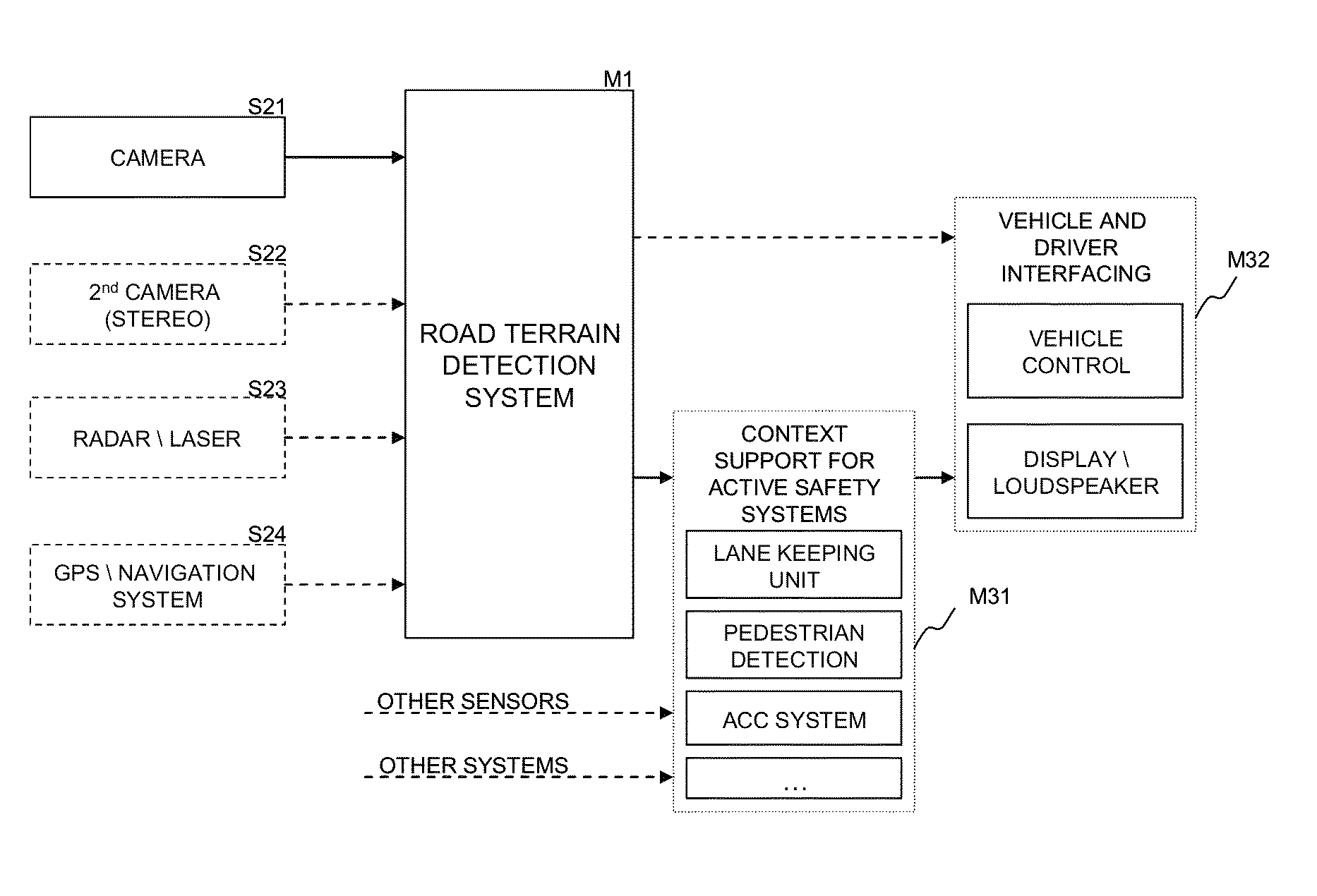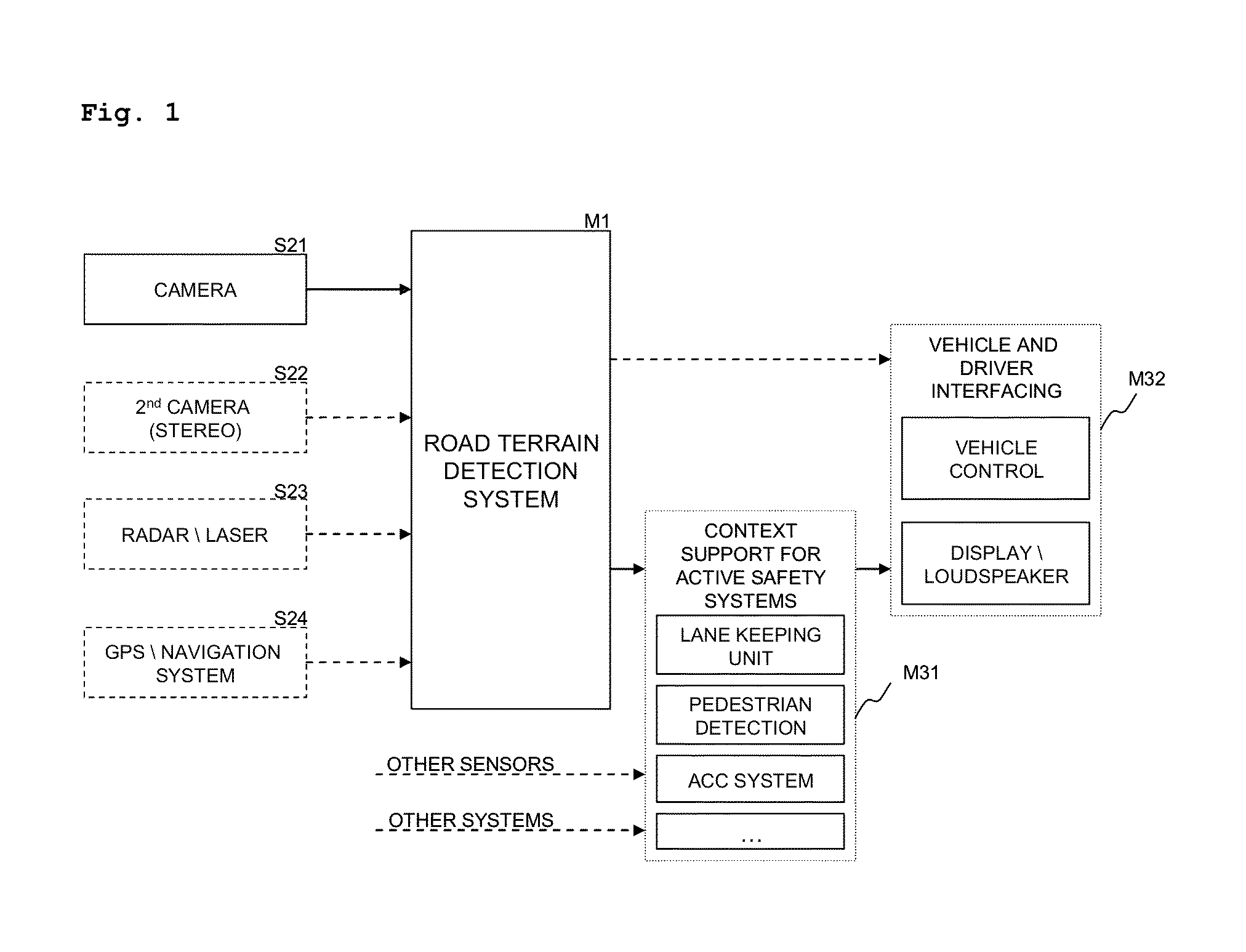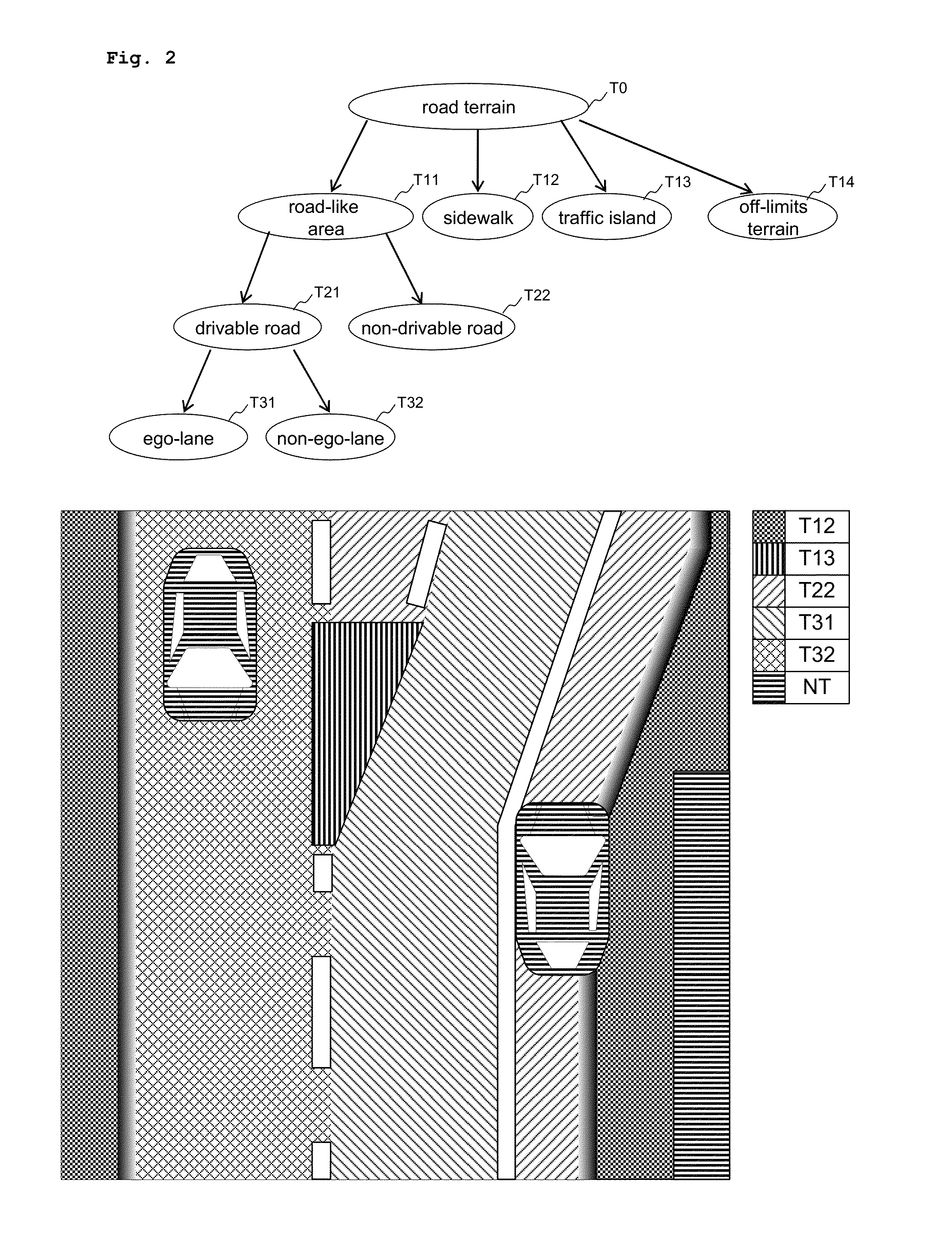Road-terrain detection method and system for driver assistance systems
a detection method and a technology for driving assistance, applied in the field of driver assistance, can solve the problems of insufficient state of the art approaches based on the detection of delimiting elements of lane/road, inability to compensate for errors, and restricted to very specific settings. the effect of local properties
- Summary
- Abstract
- Description
- Claims
- Application Information
AI Technical Summary
Benefits of technology
Problems solved by technology
Method used
Image
Examples
Embodiment Construction
[0085]The method of the present invention that realizes the road terrain detection can be used to provide context information in active safety systems for driver assistance or control information for the generation of motor commands for autonomous driving (see FIG. 1).
[0086]FIG. 2 shows that road terrain (T0) is categorized into road-like area (T11), sidewalk (T12), traffic island (T13), and off-limits terrain (T14). The road-like area consists of drivable-road (T21) and non-drivable road (T22), wherein drivable road is subdivided in ego-lane (T31, the lane the vehicle drives on) and non-ego-lane (T32, the lane the vehicle does not drive on but other vehicles might drive on). Non-road terrain (NT) describes larger, elevated objects that a vehicle in road scenarios encounters and that cannot be potentially driven over. Such objects are e.g. other cars or vehicles, or buildings. The example image in the lower part of FIG. 2 shows a top view of a road scene illustrating the road terrai...
PUM
 Login to View More
Login to View More Abstract
Description
Claims
Application Information
 Login to View More
Login to View More - R&D
- Intellectual Property
- Life Sciences
- Materials
- Tech Scout
- Unparalleled Data Quality
- Higher Quality Content
- 60% Fewer Hallucinations
Browse by: Latest US Patents, China's latest patents, Technical Efficacy Thesaurus, Application Domain, Technology Topic, Popular Technical Reports.
© 2025 PatSnap. All rights reserved.Legal|Privacy policy|Modern Slavery Act Transparency Statement|Sitemap|About US| Contact US: help@patsnap.com



